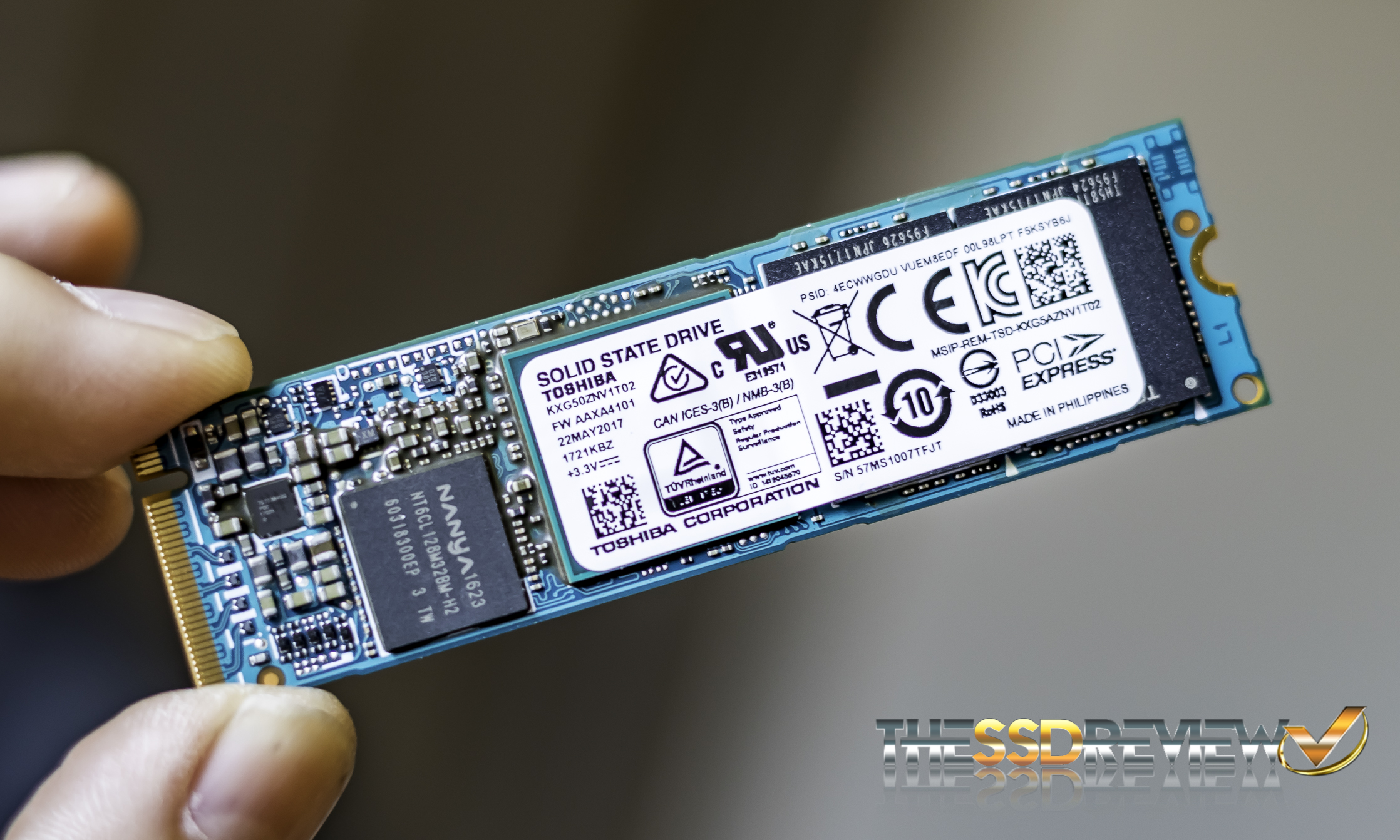Flash memory, at the consumer level, came to the forefront in late 2007 and has changed everything we do, without most understanding , or caring to understand the reason why. Its advance has changed our world and we do things every day that somehow touches flash memory in some way, shape or form. The easiest example might be a quick look at your smart phone and wondering why it is more powerful than the typical home PC just a few years ago. The latest success in the world of flash is 3D NAND flash memory, 64-Layer memory in fact. This memory provides the consumer with incredible performance, value and storage. The Toshiba XG5 1TB NVMe SSD contains Toshiba’s 3D Gen 3 64-Layer BiCS memory and our report will examine Toshiba’s newest memory, as well as their secretive NVMe controller that goes along with it.
SPECIFICATIONS
Not to start on a negative, but you cannot buy this SSD. It is an oem SSD that will ship in pre-configured PCs, laptops and ultras, but you can be certain that a consumer retail version will be following along sometime in the future. The only difference between the two is that the firmware in the oem version is set to widest adaption over several oems, which means that the consumer version just might be a bit more powerful when released.
The Toshiba XG5 will be shipping ‘to oems’ in capacities of 256GB, 512GB and 1TB ‘initially’ and our sample is PCIe Gen 3 x4 (4 lane) NVMe 1TB in capacity and is of a 2280 (80mm) form factor. Its performance speaks to about 3GB/s read and 2.1GB/s write with power listed as < 4.6W read and <3.5W write typically, with L1.2 (sleep) mode dropping to <3mW.
The XG5 contains two Toshiba BiCS 3D 64-Layer NAND flash memory chips, a NVMe controller (TC58NCP090GSD) and a NANYA buffer (NT6CL128M32BM). It is available in self-encrypting drive (SED) configurations with or without TCG Opal encryption.
Toshiba, at present, would not reveal any details with respect to the controller but one could guess that it is an eight channel controller simply by the performance.
As well, with the newest Gen 3 64-Layer 3D design, it is entirely possible that we may, not only see a 2TB some time in the future, but also… a single sided 2TB design.
When formatted, the total capacity of the XG5 is 954GB.
 The SSD Review The Worlds Dedicated SSD Education and Review Resource |
The SSD Review The Worlds Dedicated SSD Education and Review Resource | 


Your PCMARK 8 RESULTS graphs are in the wrong order.
Also, I’d really like to see the power usage results! You seem to ignore posting them often for an unknown reason.
Thanks for that. I will switch them up. When I test, I don’t do the power testing. I leave it to Sean with his enterprise test regime. If he happens to do consumer drives, he will do the testing because he has the equipment right there in front of him.
Well I’ve found the most interesting metric so far about NVMe SSDs is
their power usage. I have been working to create a program to estimate the total cost of ownership. In other words, I take the lifespan of the largest drive and add in the cost of each drive plus electricity and if the lifespan is too short than the cost of buying a new drive (or drives), to see how much each drive *really* costs compared to it’s competitors.
This is a really cool metric no-one seems to care about. Sadly, no-body seems to give *all* the power info about a drive. Anandntech has started, but only the info for 2 or 3 drives is available.
Thanks for your reviews, and please encourage Sean!
Consumer and oem SSDs. The SSD will be replaced long before cost of ownership will be considered. Next up…power usage. It is not a major consideration, if any at all, with consumer SSD buyers. That is why we reserve our enterprise reviews for such. Don’t get me wrong. I am not discrediting you at all but, in most cases, SSDs are received only 3-4 days prior to when the embargo is when the report is to be released. Trust me when I say reviewers work their asses off to get an accurate report out in a very small period of time. It is not uncommon whatsoever to receive a SSD on Friday, without warning, for review release Monday morning…when you had a weekend planned. For many, the pay for doing such is very little if not non-existent. Many work on retention alone in the tech world. Just a peek into the SSD review lifestyle…
I totally understand. Its a cruel world sometimes.
What I have always wondered is, what happens if you get your review out 1 or 2 days after the embargo expires?
Let’s face it, you can give a better review if you have more time, plus you can think about what you are writing vs. being in a mad rush.
Personally, I typically am the last person to have an opinion on a given topic, but mine are far more accurate because I do the research and take the time to go through all of what I know and have learned.